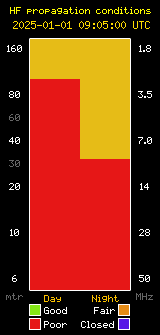Technical Mentoring and Elmering Net – January 19, 2017
The audio archive can best be followed by downloading the .mp3 file for the appropriate date here and listening with the media player of your choice. You can move the progress slider forward or backward to the subject of interest to you. We had another good net tonight with 14 check-ins including net control, Ken, KA6KEN and some chat room visitors! Tonight’s subjects included: K6FLD Mesh Network troubleshooting. What kind of antenna could be used specifically for receiving low power CW or digital signals? Discussion about K6LCM’s End Fed (DxExtreme) antenna issues. Discussion about local repeater operations and infrastructure. Tune in to the SBARC TM&E Net every Thursday at 8:00 PM local (2000 Hrs) and see what interesting questions will arise or ask some of your own! All club members and visitors are encouraged to check in to the net each week and join in with questions and /or answers to and contribute the knowledge of new and seasoned amateur radio operators alike.









